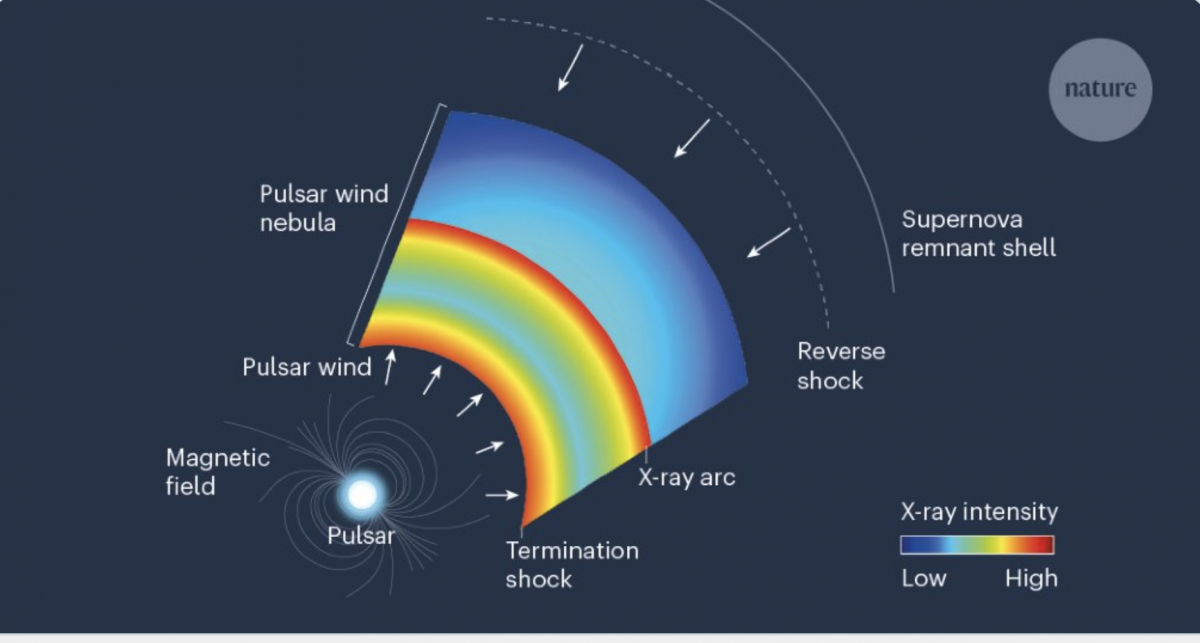
Nature News and Views article: on the visualization of a magnetic field using X-rays in a stellar graveyard (or pulsar wind nebula)
As Nature News and Views reports:
An X-ray imaging mission has unveiled the magnetic field in the environment of a dead star. The order and symmetry of the field will reshape our understanding of how it accelerates particles to ultra-high energies, says UM astrophysicist Dr. Samar Safi-Harb, Tier 1 Canada Research Chair in Extreme Astrophysics, and author.
In the remnant of a supernova, the core of the dead star (a pulsar) emits a particle wind that gyrates within a magnetic field that is typically doughnut-shaped, and accelerates the particles to ultra-high energies, generating a gas cloud called a pulsar wind nebula. The onset of the pulsar wind nebula is known as the termination shock, and the nebula is also subjected to a reverse shock in the opposite direction as it ages. The magnetic field causes particles to emit radiation, and emission with X-ray wavelengths is visible as arcs that can indirectly reveal the shape of the field.
Researchers used X-ray emission data from the Vela pulsar wind nebula to infer the geometry of its magnetic field, which is a symmetrical and surprisingly highly ordered structure. This could help to shed light on why these nebulae are among the most powerful particle accelerators in the Universe.
Astronomers have been exploring pulsars ever since their discovery 55-years ago. In the past two decades, NASA’s Chandra X-ray Observatory has enabled close-up views of their nebulae, but direct imaging of the magnetic fields responsible for their high-energy radiation has not been possible. This is largely because magnetic fields are invisible—to visualize them, astronomers use the properties of light emitted when particles are accelerated, which occurs through a process known as synchrotron emission.
This type of radiation is generated when magnetic fields bend the paths of particles that are relativistic (meaning they are travelling at speeds close to that of light), and it can be emitted with wavelengths ranging from radio waves to X-rays. The electromagnetic field of the photons emitted by synchrotron radiation is expected to vibrate in one direction, which is perpendicular to that of the nebula’s magnetic field. So, measuring the direction of this vibration—the ‘polarization’ of the emission—can reveal which way the magnetic field is pointing.
Read the full Nature News and Views article here.






